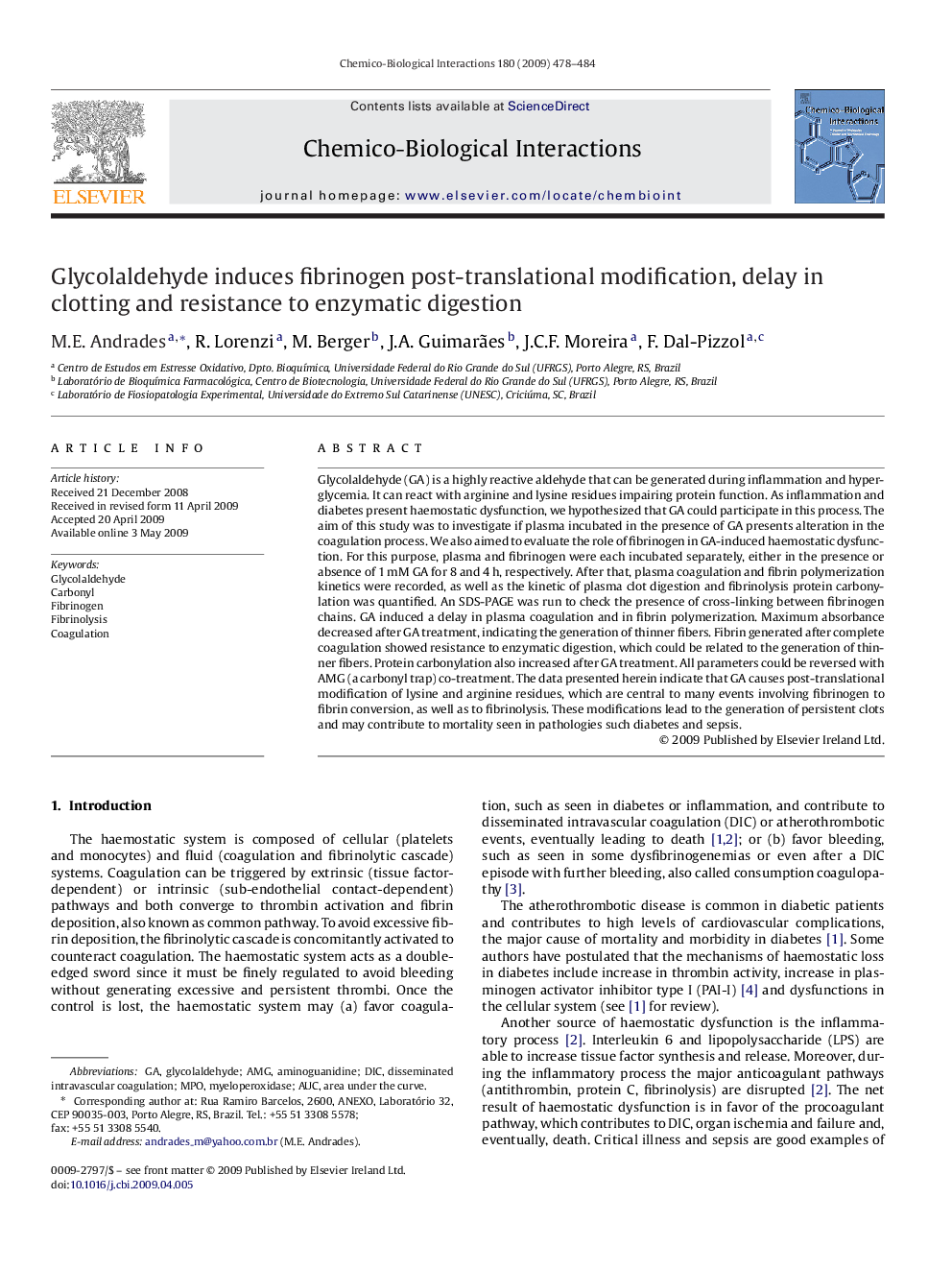| کد مقاله | کد نشریه | سال انتشار | مقاله انگلیسی | نسخه تمام متن |
|---|---|---|---|---|
| 2581463 | 1561649 | 2009 | 7 صفحه PDF | دانلود رایگان |

Glycolaldehyde (GA) is a highly reactive aldehyde that can be generated during inflammation and hyperglycemia. It can react with arginine and lysine residues impairing protein function. As inflammation and diabetes present haemostatic dysfunction, we hypothesized that GA could participate in this process. The aim of this study was to investigate if plasma incubated in the presence of GA presents alteration in the coagulation process. We also aimed to evaluate the role of fibrinogen in GA-induced haemostatic dysfunction. For this purpose, plasma and fibrinogen were each incubated separately, either in the presence or absence of 1 mM GA for 8 and 4 h, respectively. After that, plasma coagulation and fibrin polymerization kinetics were recorded, as well as the kinetic of plasma clot digestion and fibrinolysis protein carbonylation was quantified. An SDS-PAGE was run to check the presence of cross-linking between fibrinogen chains. GA induced a delay in plasma coagulation and in fibrin polymerization. Maximum absorbance decreased after GA treatment, indicating the generation of thinner fibers. Fibrin generated after complete coagulation showed resistance to enzymatic digestion, which could be related to the generation of thinner fibers. Protein carbonylation also increased after GA treatment. All parameters could be reversed with AMG (a carbonyl trap) co-treatment. The data presented herein indicate that GA causes post-translational modification of lysine and arginine residues, which are central to many events involving fibrinogen to fibrin conversion, as well as to fibrinolysis. These modifications lead to the generation of persistent clots and may contribute to mortality seen in pathologies such diabetes and sepsis.
Journal: Chemico-Biological Interactions - Volume 180, Issue 3, 14 August 2009, Pages 478–484